 iBasso DX120
iBasso DX120
 DX120
DX120
Manufacturer Website:
iBasso DX120 Home;
Amazon DX120
A Little Technical Stuff:
Specifications:
· Output Voltage: Frequency Response: THD+N:
· DNR: S/N: Crosstalk:
· Output Voltage: Frequency Response: THD+N:
· DNR: S/N: Crosstalk: Output Impedance:
· Output Voltage: Frequency Response: THD+N: DNR: S/N:
· 3.6Vrms 10Hz-45kHz+/-1dB 0.00028%,-111dB (without load) 0.00032%,-110dB(32Ω@2.4Vrms) -117dB 117dB -116dB
· 1.8Vrms 10Hz-45kHz+/-1dB 0.00042%,-107dB (without load) 0.00056%,-105dB(32Ω@1.2Vrms) -115dB 115dB -115dB 0.24ohm
· 1.8Vrms 10Hz-45kHz+/-1dB 0.00042%,-107dB (without load) -115dB 115dB
· 3.5mm Line Out:
· 3.5mm Single Ended:
· 2.5mm Balanced:
Average Play Time: 16 hours. (The play time varies with different resolutions and headphone/IEM loads.)

 iBasso DX120
iBasso DX120
-MRSP: $300
iBasso has been a company with a longstanding reputation among the audiophile crowd. Their DX200, with the ability to swap out amp sets, really made a splash and had become a reference player for many reviewers.
The mindset in the development of the DX120 was different. This player, on the lower end of DAP pricing, was designed to do one thing and one thing only, deliver high-quality music to the listener. I really appreciate and can support a company that spends its research and development time on quality sound versus throwing every feature, including the kitchen sink, at the consumer. I am going to put this out there from the beginning, this little DAP is incredibly good at its objective, delivering a high-quality sound to whatever headphones or IEM’s you are using. I have no sensitive IEM’s in my collection so I cannot test whether there is a hiss, with everything I own there is no hiss.

My review is seriously delinquent, and I apologize to iBasso and my readers, but life does indeed happen. Hopefully, it is worth the wait.

I have been privileged enough to review DAP’s at all levels and my current reference DAP is the Questyle QP2R, but it is a DAP I don’t carry in my pocket, or when walking my dog or going to the gym. There are a couple of reasons for that, one being that the QP2R is largish and more substantial in hand than any of the others I have in my collection. Secondly, it is expensive, and I don’t want to run the risk of damaging it. As I said, it is my reference DAP, and I use it for critical listening, so sitting at home is perfectly fine when employing the QP2R.
On the flipside, the iBasso DX120 is one of the DAP’s I wouldn’t leave home without. It has an excellent level of sound, compact and sexy build, and power to drive any of my hybrids, especially in the 2.5mm balanced port make it a welcome traveling companion.
A Little Marketing Hype:



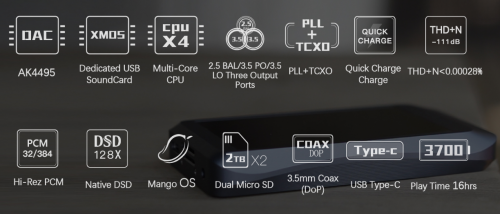 Unboxing and Accessories:
Unboxing and Accessories:




The iBasso DX120 is enclosed in simple packaging. When viewing the packaging and pack-ins one must consider that this has been priced aggressively and everything included aptly fits the price tag. Frankly, I couldn’t ask for anything more than what is enclosed.
The box comes wrapped in a silver-gray sleeve. The sleeve is emblazoned with the iBasso logo and the text iBasso Audio, In Pursuit of Perfection. One edge of the outer packaging has the company website address and the other shows DX120, High-Performance Digital Audio Player and beneath a sticker that shows Blue, the color of the unit I was sent. On the back of the sleeve are some basic specs in multi-languages, as well as a sticker that shows DX120 and the S/N.
Upon removing the sleeve, you are greeted by a rectangular shaped box, blue in my instance, with a box top that closes with a magnetic closure. Inside is nestled the DX120, enclosed in a throwaway bag, for protection, and nestled in a foam cutout with the words DX120, High-Performance Digital Audio Player tattooed prominently on the cutout.
Lifting the cutout exposes a black box which included all of the pack-ins. All of the included accessories are listed below, so there really isn’t much need to take a deep dive into those. I do want to mention a couple of critical points about the inclusions, the first being that while it is thoughtful to include a border case for minimal protection, it created more frustration than its minimal protection was worth, as far as I was concerned. First, there is no back protection for the DX120, and while with the case on it does keep the back from sitting flush on a table, it offers no further protection. I can deal with this, but the one thing I can’t deal with is the fact that the cutout, around the 2.5mm balanced output, did not allow for the cable to connect firmly and seat completely. This would require me to remove the case to use my balanced cable, thus negating even the minimum protection offered by the case. My summation is, any protection is better than none at all, but I think an included case designed to protect from scratching, maybe silicone, would be a better option. I know silicone is a lint magnet, in the pocket, and usually, they lose their shape, but it is only my suggestion.
Included is:
· USB C (braided)cable for charging and data transfer
· Warranty Card/HDtracks Promo
· A border type silicon semi-protective case
· Tempered glass screen protector
· Coaxial cable converter
· A burn-in cable
· DX120
Design and Build:
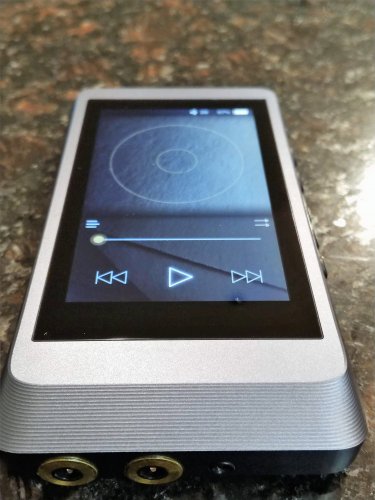
This is my first review of an iBasso product. After reviewing quite a few DAP’s I will say that the size, design and build materials and quality are all First Class.
The DX120 is 63mm X 113mm X 15mm with a 3.2” screen and comes in at a lightweight 165g. The aluminum chassis not only contributes to the sexiness of the feel in your hand but also, it’s weight. The unit itself is not a plain rectangle with sharp edges and lines, it is designed with sleek lines and a “wave design” on the sides of the unit. The wave design and bevels give the DX120 an engineered look as opposed to something fabricated, absent of thought or consideration as to the aesthetics. There are two colors available, Sky Blue and Earth Brown, my unit is the Sky Blue.
The screen is of decent quality, and while being a touchscreen, it also has suitable colors and contrast for outside viewing. The back side of the DX120 is flat and has a glass covering. Already affixed to the DX120 is a tempered glass back protector.
On the left side of the unit is nothing, no controls, nothing. It has the “wave” design and nothing more.
On the bottom of the iBasso there is a 3.5mm Line Out and a 3.5mm Headphone Out and to the right of those outputs is a 2.5mm Balanced output. In my opinion, the bottom of the unit is the only thing questionable in its design. With the three outputs being linearly placed, both the Line Out and the Single End output are adorned with a gold ring. The same gold ring, with a black text identifier too difficult to see for my old eyes, not to mention it is written in black on a blue colored chassis. With time, you learn that the LO is on the left and the PO is on the right. Until you learn, you will plug into the wrong input, I guarantee it. The 2.5mm output is just a port without a “ring,” only with text showing balanced.

The controls are on the right-hand side of the unit. Some of the controls are handled through the touch screen and the UI, while some of the controls are physical buttons. The control buttons all adorn the wave design along the right side of the DX120.

The single top button on the right is the power on/off button. The button also controls the screen on and screen off as well. A slight push will turn on/off the screen while holding the button down will power on/off the unit.
Next, the button line-up is the volume up/down buttons. These buttons are the largest of the buttons. The volume control is broken into 100 volume steps. I really like this level of control as you can always find the proper listening level and in other DAP’s firmware which has fewer steps there are times, you would be more satisfied with a half step in-between the full click.
Last but not least of the hard controls are the playback control buttons. There are three buttons in this array, one of which advances to the next track, in order of the playback control buttons this would be the top playback control button. If the button is held, it will fast forward through your music track. The middle button of the trio is the play button which also serves as a screen lock, when depressed and held. The bottom of the playback control buttons would take you to a previous track or rewinds the track when held.
Finally, the top of the unit. The top has a USB-C port and two memory slots and a coax port. The USB-C allows you to charge the device and also provides the functionality for the USB-DAC. The DX120 has a built-in quick charge as well.

I really like the fact that there are dual memory cards. I have mine loaded with 2-256GB cards. This allows for an extensive music catalog. I have been eyeing the 400gb cards as they have started to come down in price. It would be cool to be able to have 800GB of music at my beck and call. You can add music in a couple of methods, the one I use most is to use as an adapter for my micro SD card, insert it in my pc and drag and drop my music in the music folder. You can select inside the Mango OS to use the memory slots as a card reader and install tunes in that fashion.
One thing I would like to mention now, in case I have a senior moment later and forget, is the fact that you can charge the unit and play music simultaneously. I have other unit’s that cannot play and charge at the same time. Nice feature!
Battery life is stated to be 16 hours. Obviously, individual use plays a big part in how long your battery lasts. I was receiving anywhere from 12-14 hours on a charge, I feel this is more than adequate. Keep in mind, I am not using mine in a daily commute and subsequent day at work and a commute home again. My cellular devices use USB-C, so if I did continually use the device, I would have a charger nearby anyway. A full charged DX120 should easily get you through your day and then some.
The internals are aptly designed to provide you with a high-quality music listening experience. The DAC is an AK4495, it is a single DAC design as opposed to dual DAC’s that many DAP’s utilize today. It is capable of playing all of the Hi-Res music formats, including DSD natively at 128X. While the AK4495 is rated to be able to obtain a THD+N of -105dB, it appears it is an engineering feat actually to achieve the THD level. The engineers at iBasso were able to reach -111dB which I am told is spectacular.
A differential operational amplifier is used on each channel with a fully balanced output design which lowers the distortion and crosstalk. The output power of the balanced output is up to 400mW with a 32ohm load, plenty of ability to drive every monitor or headphone I have in my collection.
UI:
The Mango OS is built on Linux architecture. To me, there is an “Androidy” feel to it, but it is Mango. No Android means there is no ability to download Android apps from a Play Store or sideload Android apps. Of course, there really is no reason to do so anyway since this is a no-frills player, without Wi-Fi and Bluetooth, thus no reason for Tidal or Spotify. Utilizing Mango vs. Android also equates to faster boot-up and load times and no additional software except what is needed for controls, adjustments, and playback. For the most part, the response is snappy, and the touch controls in Mango are lag free and fluid.

The UI functions by swiping the screen L to R or R to L depending on what you wish to control. A swipe L to R will take you to My Music, and a swipe from R to L will bring you to Settings. There is also a “center” screen which would be aptly named the Music Playback screen.
I will include some pictures to give you the feel of the OS, but unlike so many DAP reviews I won’t bore you with a view of each available screen, it just makes the reviews too freaking long. I will, however, talk about some of the more exciting features available in the OS.
I have always loved A&K and theBIt and used them for the bar to reach regarding their user interface, but now I will gladly lump the Mango OS into that same polished, usable category.

One of the features that warrants discussion is the sound modes. These come already configured for the listener, and there are 5 options to choose from, Reference, Traditional, Original, Classical and Natural. There is not a vast difference between the options, in my opinion, and the decision of which will be your favorite is purely subjective, and I have chosen Reference and Traditional as the two options I use the most, with Reference being my primary go-to.
Directly above the sound modes are the Digital Filters. As with the Sound Modes, the Digital Filters are mostly minor tweaks. The Filters are designed to enhance the level of attack and decay on your music. The Filters are Sharp roll off, Slow roll off, Short delay sharp roll-off, Short delay slow roll off and Super slow roll off. These are designed to allow the listener a higher level of personalization and find the sound signature that agrees most with their tastes.
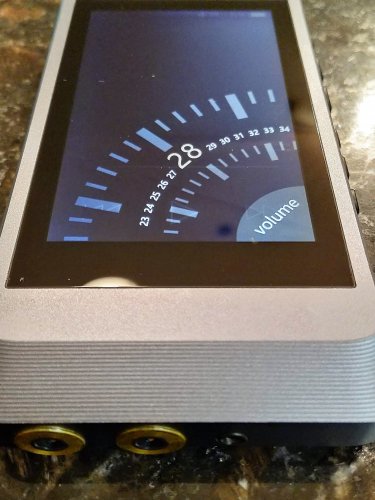
Of course, the DX120 also comes with pre-loaded EQ settings to align with the Genre of music you are listening too as well as a custom setting to make your own adjustments. The pre-loaded options are Classical, Pop, Dance, Rock and Bass. I am not a massive user of EQ, but it is there for those that do use EQ.
On the Playback screen there is a “quick settings” menu that can be accessed giving you controls for Gapless(on/off), Gain(low/high), Digital Filter, Sound Mode and whether you are using your DAP as a Reader, a DAC or are plugged in wishing to Charge only.
One other noteworthy option on the Playback screen is available when you touch the Album Art. You will be presented with an opportunity to add to a playlist, delete the track or display more information about the track ie. Duration, Sample Rate, Bit Rate, File #, Title, Album, Artist and the Path or location of the track on the player.

The entire OS is well thought out and user-friendly. Since this is a DAP focused on the quality of sound and music playing only, it has a vast array of customizations to allow the consumer to enjoy their music. Hats off to iBasso for simplicity and usability.
Moving on to the sound:
The iBasso DX120 is a mighty, pocket-sized wonder. The signature is dynamic, full and unobtrusive in its coloration of the music, it delivers the music as intended. It is not clinical or dry in its sound, particularly in the 2.5mm balanced output, it does not add a layer of color.

I must say that I am impressed with the overall signature. This is one reason I like the recent trend of DAP’s dedicated to sound as opposed to including every feature imaginable. Additional features add to the cost of the device and the DX120 is a device that delivers in its sound signature well above the price of admission.
I have found that some of my hybrid IEM’s shine when played through the balanced output, it is not as if in the SE output they don’t sound fantastic, because they do, it is that the additional power brings out the best of my music tracks. The balanced output just seems more dynamic and alive, where SE the DX120 can come off a little dry, by comparison to the balanced output. It is not a criticism, it is just a preference of mine, I prefer the dynamic, lively signature.
The architecture of this signature is rendered with a dark background, none of MY IEM’s display hiss or any unwanted sound artifacts, it is a dark sound floor.

Overall, the signature comes alive with any genre of music, there is a delicate precision without being clinical. The stage is wide and extends well on the fringes of the spectrums. The treble extends well and does not sound shrill as if it rolls off, it is solid and defined at the edge of the frequency. There is a crispness in the upper range which exhibits the details from cymbal crashes with an average decay. I really enjoy the mids in the balanced mode of the DX120, they are a bit forward, but not obtrusive. The details are portrayed thoughtfully, but detailed. The lower mids accentuate the punchiness in the music, and the bass and sub-bass are full-bodied and robust. The amount of layering showcases your music without any blurring or smearing into any other frequency. The decay is natural across all frequencies, unveiling the sharp, crisp, punchy and dynamic signature. The DX120 is not a thin sounding DAP, it is energetic and full, but without excessive bloat.

I tested a variety of file types and concluded that if you feed the DX120 high bitrate files, you will undoubtedly be rewarded. The tone of the DX120 paired perfectly with the Empire Ears Legend X, and on 2.5mm output, it unleashed the fury that is known as the Legend X, and it’s excellent DD bass.
In summary, the treble extends well and is a bit edgy but never offends. It is detailed and stretches the listeners focus to the fringes of the spectrum and assists with conveying the emotion and is never fatiguing. The mids are smooth and accurate, and the lower mids have a wonderful punchiness, especially when utilizing the balanced output. It bears the bass parts without muddiness or smearing, the bass notes are clear and present. Sub-bass is solid and present and the mid-bass punchy. With every IEM I have to test, the noise floor was black, but I have read that with sensitive IEM’s there can be some hiss, I apologize I cannot verify this.
You might want to own this DAP if:
+ You utilize the 2.5mm balanced output
+ You prefer a smooth, balanced, non-offensive, dynamic signature
+ You prefer a sound that is full of emotion and excels at long listening sessions
+ You need the power to drive higher impedance IEM’s or headphones(balanced)
+ You want to carry two micro-SD cards with your entire music collection
In Closing:
It is essential to compare apples to apples when comparing DAP’s. This is a sound first and focused player. It is not for you if you need features like streaming and WI-FI.
There is undoubtedly adequate storage with the addition of two micro-SD slots, a welcome addition.
The DX120 plays all of the popular file formats and truly excels with high bitrate files.
I must include the subjective part of this review and say that while I have more expensive DAPs in my collection, the DX120 receives more play time than any of the others. The sound is top notch.
I could go on and on in the conclusion/summary, but I will say in closing that the DX120 has an excellent form factor, build quality, simple UI, and TOTL sound quality. I see no reason that it shouldn’t be on your short list to buy!
Hats off to iBasso for a quality product at a quality price































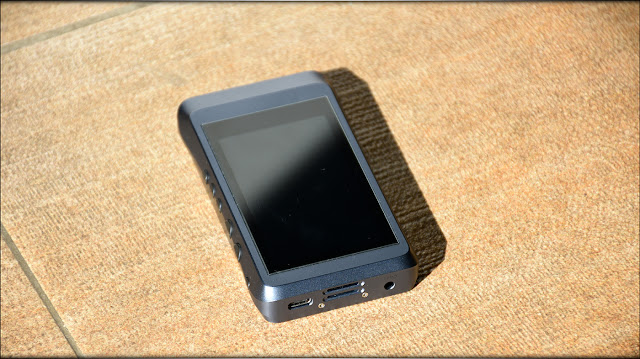








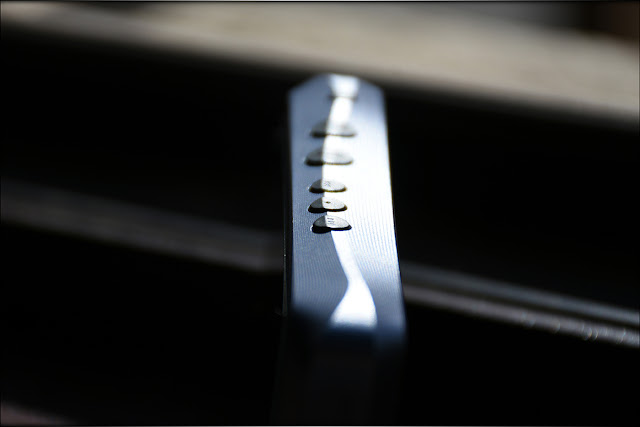











 It seems we have heard this one differently, but I think we're on the same page otherwise! Maybe the headphones paired with DX120, or the music itself reflected the differences differently, I know you love more mature music, where Slow Roll Off may compliment it very well, while for metal, a faster and more punchy, maybe even a touch more energetic on the top end, would compliment it more.
It seems we have heard this one differently, but I think we're on the same page otherwise! Maybe the headphones paired with DX120, or the music itself reflected the differences differently, I know you love more mature music, where Slow Roll Off may compliment it very well, while for metal, a faster and more punchy, maybe even a touch more energetic on the top end, would compliment it more.

Tracks Used :